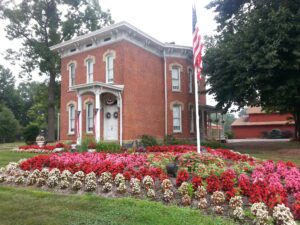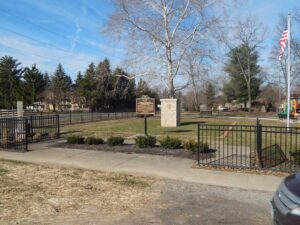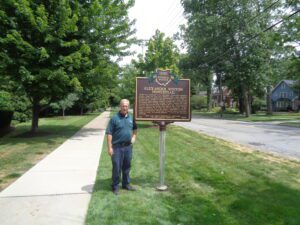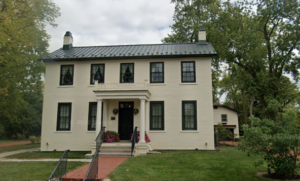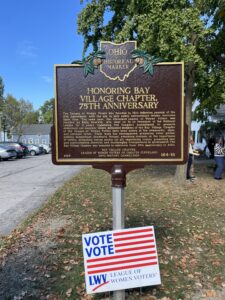, OH
The Clague House and barn serve the community as a museum, history library, and a community theater. It is also a reminder of the area’s agrarian past and is a memorial to the philanthropic generosity of the Clagues. Robert Clague first came to Dover Township from the Isle of Man in 1829. Clague briefly returned to his native land; in 1837 he arrived back in Dover with his wife and infant. The couple raised nine children on the 78 acre farm. The Italianate structure, built in 1876, is the third home constructed on the Clague property. In 1926, surviving children Walter and Sophronia donated the farm to Dover Township for the creation of Clague Memorial Park.
, OH
The Clague House and barn serve the community as a museum, history library, and a community theater. It is also a reminder of the area’s agrarian past and is a memorial to the philanthropic generosity of the Clagues. Robert Clague first came to Dover Township from the Isle of Man in 1829. Clague briefly returned to his native land; in 1837 he arrived back in Dover with his wife and infant. The couple raised nine children on the 78 acre farm. The Italianate structure, built in 1876, is the third home constructed on the Clague property. In 1926, surviving children Walter and Sophronia donated the farm to Dover Township for the creation of Clague Memorial Park.
, OH
The first Blendon Presbyterian Church was located at the intersection of Dempsey and Hempstead Roads on what is part of Blendon Central Cemetery. Timothy Lee (1785-1862) donated land at the northeast corner for a church and cemetery. The church was dedicated on December 6, 1829, but it burned that same night under suspicious circumstances. Following the fire, the congregation’s members built another edifice on “Phelps Acre,” across Hempstead Road and so named for benefactor Edward Phelps. Sr. (1759-1840). The congregation held services there from 1830 to 1865. It was believed that the church was finally abandoned and dismantled piecemeal after the Central College Presbyterian Church was finished in 1870.
, OH
On this site, Alexander Winton (1860-1932), an American automobile pioneer, built and lived in a lakefront estate named Roseneath. Winton was born in Scotland and immigrated to the United States as a young man, settling in Cleveland. In the early 1890s, Winton founded the Winton Bicycle Company; six years later, he incorporated the Winton Motor Carriage Company. In 1903, Winton’s auto plant on Berea Road was one of the largest in the world, and he produced the first car to cross America from coast to coast. These business successes enabled him to build the 25-room Roseneath. In 1912, Winton founded the Winton Gas Engine & Manufacturing Company, which would eventually become part of General Motors Corporation. Winton is buried in Lakeview Cemetery. A fire in 1962 destroyed Roseneath.
, OH
Hugh Grant Sr. (1769-1806) owned a gristmill and land in Pittsburgh, Pennsylvania, during the 1790s. He married Catharine Barr Grant (unknown-1836) and they had 6 children: Alexander, Jacob, Isabella, Nancy, Mary, and Hugh Grant Jr. (born posthumously). In 1804 Grant purchased 450 acres of federal land at the Chillicothe land office. In 1805 he and his family moved to Jackson Township, Ohio. Uncertain of the location of his tracts, he settled his family in a log structure along the Scioto River. During the winter of 1806-1807, Grant died in a freak accident climbing a honeybee tree. Catharine Barr Grant realized they were on the wrong land and moved her family to the right property holdings where the Grant Homestead remains. She died August 17, 1836, and is buried in Union Methodist Cemetery.
, OH
The Bay Village Chapter of the League of Women Voters was established in Spring 1948, with Dorothy M. Austin as president. The goal of the chapter was to ensure all citizens of Bay Village had the information they needed to cast an educated vote. They first met in the Cahoon family homestead, which then served as the city library and later as Rose Hill Museum. Gladys H. Luecke led the group on its first study, a city charter form of government for the village. Voters approved the charter on April 12, 1949, and the Village of Bay officially became the “City of Bay Village” in 1951. Since its founding, the Bay Village Chapter has made an educated voter its first priority by supporting citizen participation in government and influencing public policy through education and advocacy.


